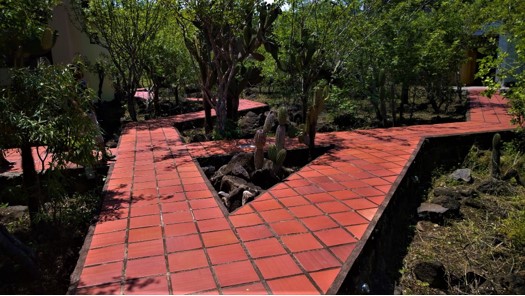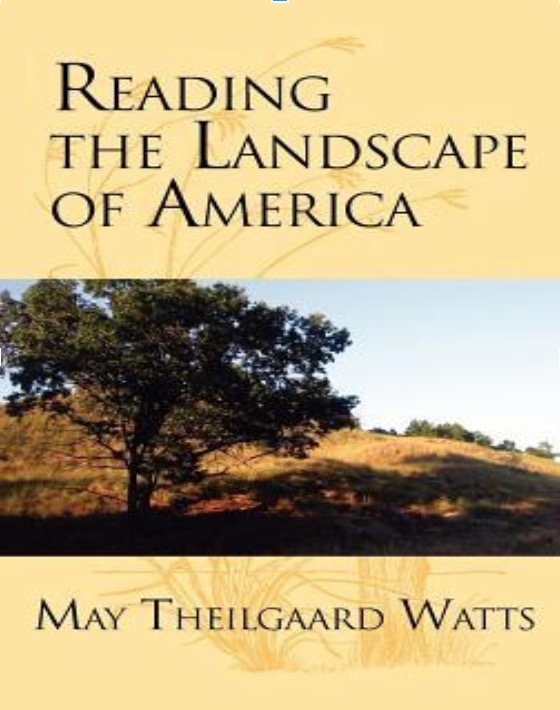In Part 1 on this topic, we explored briefly how the Frost Science Museum, the Abraham Lincoln Presidential Museum and the Wellcome Collection embraced aspects of this challenge. Even though their solutions had a large budget attached, their philosophy is relevant to all scales of facility.
Now in Part 2, let's explore two different related angles from the previous inside museum and architect viewpoint.
At this juncture it is worth bringing up the concept of inherent narratives, whether that is the visitors’ or the heritage site's. Previously, we kicked off things by sharing a specific building architect’s viewpoint, however we want to avoid the dangerous reliance on build it and they will come philosophy. Instead we want to embrace the reveal it and they will engage philosophy.
Reveal It and They Will Engage
How might you achieve this? If we lend an ear to a specific landscape architect, the admonition is to strive to let the landscape speak. Try not to default to using narrative text, dialogue and words. The former italicized phrase was the title of a wonderful article by Laura Bassett in the January/February 2017 NAI Legacy magazine. Landscape architects do not speak a word but try to draw out the explicit and implicit messages for the interpretive experience. Should that not be a major component of our role also?
Laura draws some strong parallels between principles essential to site design from a landscape architect perspective and the shaping of an interpretive interaction. She comments that shaping the visitor experience is about helping the visitor to hear the inherent immersive narrative. To begin to do that one needs to discover what questions visitors have when they walk your site. Then the task is to build on that curiosity and help them to investigate the stories embedded there, in the landscape, in this case. This is just as easily transferred to discovering what the visitor ponders about when they first look at an artifact? A work of art? An historic figure’s life?
A case in point- the Pratt Museum in Homer, Alaska – a regional natural history museum that is an exploration of people and place that aims to encourage curiosity and spark passionate interest in where they live. Their claim to interpretive fame – they have recorded the highest dwell time per square foot of any North American museum. This is according to Nina Simon, in her TEDx talk titled Opening the Museum which I heartily recommend along with her book The Participatory Museum, which is full of smart practice case studies. She makes the point that it is necessary to understand the personal narrative of the visitor as they enter your site in order to relate better. Engagement built on interest will reduce museum fatigue. Pratt Museum staff did just that and recorded visitor questions to ascertain their interest and expectations, then redesigned their museum space and content. One must stay mission driven and outcome focused while using this visitor research so it does not simply become pandering and disjointed.
Discovering Embedded Stories
In addition to acting on the recording of visitor questions, we still have the other half of the equation - investigative curiosity. A gem of a book called Reading the Landscape of America by May Theilgaard Watts explores this concept of discovering embedded stories and making them relevant to a human’s life story. “The land offers us good reading, from a lively unfinished manuscript.”
One passage relates how the childhood and old age of a stream has much in common with the childhood and old age of a human. “We were looking for the birthplace of a stream. We had learned that streams… have it in their destiny to shape a ravine in their mud- pie childhood, and then knife out a canyon in their whittling youth, before their waters find middle- age spread … and old age resignation."
The chapter called "In Search of Antiques", makes a heritage connection between a woven bedspread, a song, a word and a forest all having one quality in common (reminiscent of the Johnny Carson Great Karnak comedy routine where he would say three supposedly unconnected words while holding a sealed envelope against his forehead then reveal the answer by ripping open the sealed envelope - a great interpretive schtick). Each of them was not only an antique but a disjunct. Each of them had been disjoined, cut off, isolated from others of its kind in the distant past. She was referring to the Great Smoky Mountains of eastern US, a region that had become a sanctuary or refuge for cut-off groups of people, customs and plants. Drawing this parallel to a universal situation existing among both human and non-human worlds brings into play that element of curiosity.
When reading the landscape, the author investigates “spacing, tolerances, confrontations, and tensions at the edges” while being observant of what’s around us on the surface or delving into hidden records that take a longer time to decipher - “the story of invasion by pollen grains at the bottom of a bog or the record of human invasion preserved in an adobe brick from a California mission.”
photo: Bill Reynolds
Pleasing Our Eyes Intellect, Body and Soul
Improving visitor access to exhibits from a physical comfort stand point and viewability (height, light, case depth, etc.) was the original intent at the turn of the century behind curbing the issue of museum fatigue. As the expression goes, we have come a long way baby, from that era. I believe we still have a way to go to engage visitors’ curiosity experientially and invite them to practice their sensing, perceiving, and reading the environment skills. Not as an idle spectator that gets the prescribed programmed wow moment and spoon fed narrative but as a doing participant actively involved at all levels discovering connections that impact their world view.
To help us channel that sense of curiosity, we need to design spaces that allow this to naturally happen. There is a warm and inviting community space – a café and concept store - in Melbourne, Australia purposefully designed for people to gather and chat, called Cibi. In Japanese, cibi means ‘a little one.’ Cibi are always curious, looking and touching all sorts of things, exploring and playing with different objects in myriad and often unexpected ways. Cibi’s design goal was to excite and please our eyes, intellect, body and soul.
Stay with us and we will continue this quest to draw on our inner cibi and excite our visitors’ eyes, intellect, body and soul.




